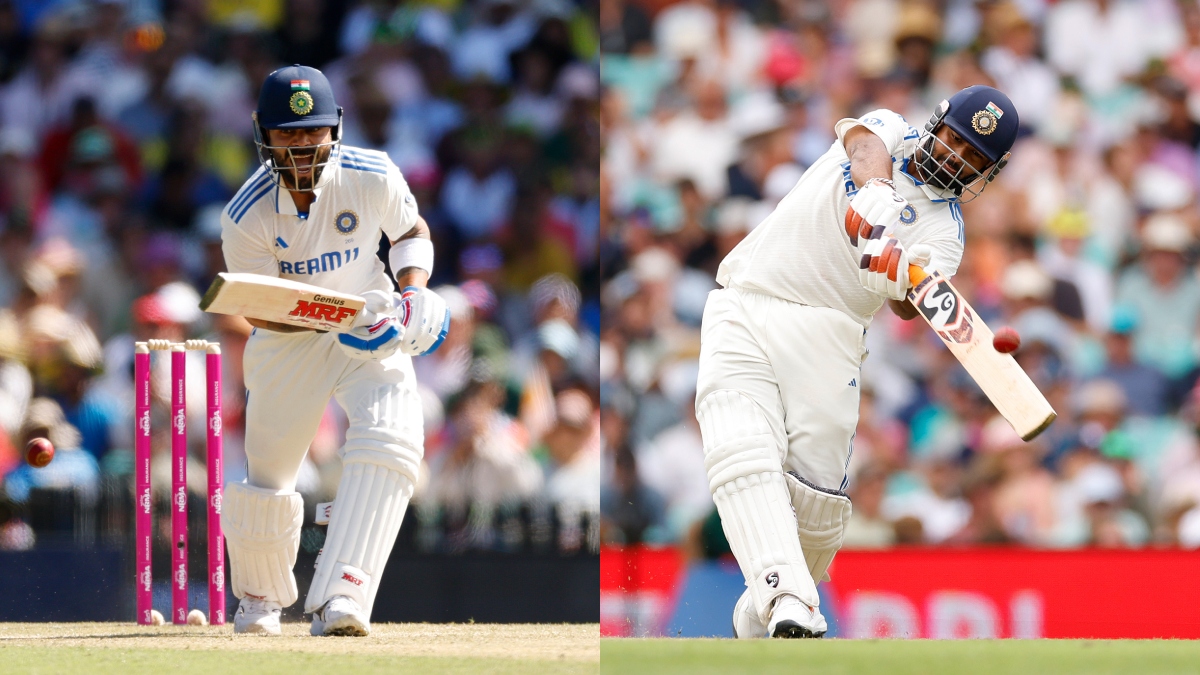 |
|
The Indian cricket stars Virat Kohli and Rishabh Pant find themselves in a peculiar position. Named in Delhi's probables list for the remainder of the Ranji Trophy, their actual participation remains shrouded in uncertainty. This situation highlights the complexities faced by top-tier international players balancing national team commitments with domestic tournaments. While their inclusion adheres to standard procedure, the likelihood of their participation hinges on several factors, primarily their availability and the perceived benefit of playing in the Ranji Trophy at this juncture of their careers.
Kohli's recent performance in the Border-Gavaskar Trophy against Australia has been a subject of considerable scrutiny. His underwhelming run-scoring, totaling 190 runs in nine innings at an average of 23.75, has raised questions about his form and sparked discussions about his future role in the team. Pant, while not significantly underperforming, also faced criticism for a less impactful performance in the series. His lone fifty came in the final Test in Sydney, leaving room for improvement. These performances, or rather lack thereof, have added a layer of complexity to the decision-making process around their Ranji Trophy participation.
The decision of whether or not Kohli and Pant will play for Delhi in the remaining Ranji Trophy matches weighs heavily on the potential benefits versus the risks involved. A DDCA official, speaking to PTI, indicated uncertainty. While their inclusion in the probables list is standard practice, their availability for the upcoming matches remains uncertain. The official highlighted that the next Test series for India isn't scheduled until June. This lengthy gap could lead many to believe that playing in the Ranji Trophy might be beneficial for maintaining match fitness and form. However, the argument also exists that participating might potentially expose them to injury risk without immediate national-team reward in the intervening period.
The official's statement sheds light on the dilemma facing both players and the Delhi team. While playing in the Ranji Trophy would undoubtedly boost Delhi's chances in the competition – they're currently in a difficult position within their group – it's less clear-cut if this would be particularly advantageous to Kohli and Pant in the grand scheme of their international careers. Their considerable experience means their focus is likely to be primarily on the upcoming national team commitments. The absence of immediate Test matches complicates matters, potentially prompting both players to prioritize rest and recovery for future national team appearances, foregoing the Ranji Trophy matches.
Furthermore, the article highlights the long hiatus from Ranji Trophy cricket for both Kohli and Pant. Kohli's last Ranji match was in November 2012, a remarkable gap of almost 13 years. In that match against Uttar Pradesh, he scored 14 and 43 runs. Pant's last appearance dates back to December 2017, against Vidarbha, where he made scores of 21 and 32. These long gaps further emphasize the changing priorities in the careers of these star cricketers, where national team responsibilities often overshadow domestic commitments. Their participation would thus represent a rare and possibly noteworthy occurrence.
The inclusion of Harshit Rana, along with Kohli and Pant, in the 38-member probables list for Delhi suggests a broad selection approach from the team management. However, Delhi's current position in Group D – just one win from five matches and fourth place – paints a challenging picture. Their upcoming matches against Saurashtra (from January 23rd) and Railways (from January 30th) are crucial for any hopes of reaching the quarterfinals. The presence of Kohli and Pant, if they decide to participate, would undoubtedly offer a significant boost to Delhi's morale and potentially their performance on the field. However, their decision remains uncertain, highlighting the complex interplay between individual ambitions, team needs, and the long-term strategic planning within elite-level cricket.
In conclusion, the uncertainty surrounding Kohli and Pant's participation in the Ranji Trophy underscores the dynamic nature of professional sports, especially at the highest level. Balancing individual performance goals with national team demands and domestic tournament commitments requires strategic decision-making. While their inclusion in the probables list is a noteworthy event, the final decision rests on a careful weighing of the potential benefits and drawbacks for all parties involved. Their decision, or lack thereof, will be keenly observed by fans and analysts alike, reflecting on the challenges and pressures facing even the most established and celebrated cricketers.
